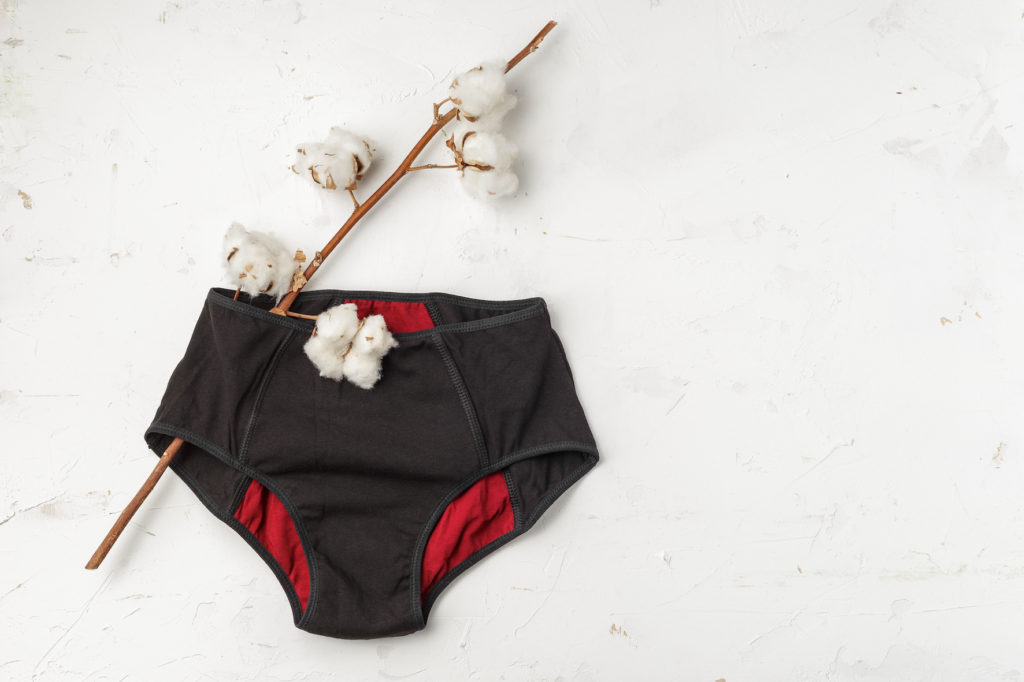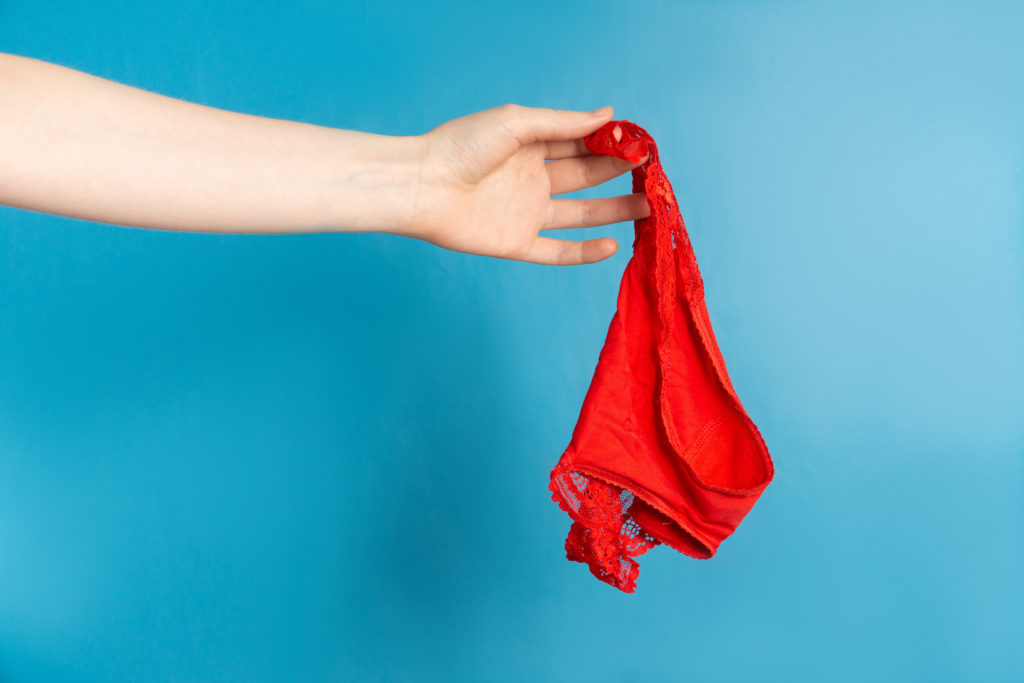A new year means new habits for many of us, myself included. This year I am looking around my house for more eco-friendly and sustainable living habits. For example, I ordered a bamboo toothbrush for the first time. In looking into other bathroom cupboards, I realized that disposable tampons and pads are wrapped with a lot of plastics too. So, I googled period panties. I am sharing my top three reasons to invest in reusable period panties with you. This isn’t a review of the products because, as a maker of lingerie, I am going the DIY sewing route.
What are period panties
Period panties look exactly like normal underwear. The difference is that the underwear has an absorbent lining built in. The lining is intended to be leak proof, catch all the blood and wick it away from the skin. They do not have a separate pad, although some brands offer extra padding to be inserted into a pocket. Period panties can be worn for 8-12 hours at a time, but really that depends on your flow level. Most manufactures claim that they can hold 2 or 3 teaspoons of liquid, the equivalent to two tampons worth. So, now that you know what they are, why should you get period panties?
The Environmental Impact of Menstruation
Reason number one to buy period panties is that it is better for the environment. This was my key driver in looking at period panties. Did you know that the average woman disposes of 125 to 150kg of tampons, pads and applicators in their life time? And it turns out that pads, tampons and panty lines all contain plastic. They come wrapped in plastic, the applicators are plastic, the string is plastic, the leak-proof base and absorbent synthetics in pads are plastic. Shockingly, pads are about 90% plastic. And this industrial plastic requires over 500 years to decompose. Thousands of tonnes of disposable sanitary waste are generated every month all over the world, in the US alone 12 billion pads and 7 million tampons pollute landfills annually.
Environmental impact caused by sanitary waste is significant. Pads and tampons contain harmful pollutants, which soak into the earth, groundwater and air from landfill sites. The plastics end up in landfills or oceans and rivers. In 2010, a UK beach clean found an average of 23 sanitary pads and 9 tampon applicators per kilometre of British coastline. Yikes!

Now, I am feeling terrible and disposable menstrual products have officially joined the list of things to start removing from my house in my quest to be live a more ecological lifestyle.
It may be a small contribution, but switching to reusables feels good to me.
Do period panties work? The pros and cons
Reason number two to buy period panties is that they work, with a few caveats. Online reviews from a variety of reputable sources suggest that the most popular name brand do function as advertised. They seem to work really well for light and medium flow days. Most reviewers raved about feeling confident about avoiding leaks in public, especially in the lead up to their menstrual cycle or at night. Most said that it takes a bit to get used to free flowing, but that it was comfortable and worry-free.
And oddly, it seems there are a number of women who have experienced a reduced number of days or heaviness of flow or reduced cramps in their monthly cycle after they switched to cloth period panties or liners. This seems to be anecdotal rather than scientific, but that idea alone should get lots of people to try them!
However, there are some less convenient factors to period panties. For people with heavy flow, you may require reinforcements, such as a cup or tampon. During your cycle you need to be able to change your underwear a few times a day. If you are wearing pants, it is annoying to always have to take them off entirely to change underwear. You also have to carry extra clean pairs of period panties and have somewhere waterproof to store the dirty underwear after you change. So really, whether you wear them may depend on your plans for the day.
Keeping it Affordable
Reason number three to get period panties is that the reusable sustainable model is cheaper.
Period panties are expensive. The average pair is US$35-45 and that doesn’t include shipping or taxes. That said, the panties should last you a few years, so you can amortize the cost of the upfront investment. Plus, if you add up what you spend on disposable pads or tampons over the year, you will find that reusable panties are more cost effective over time.
And for those of you who sew, making your own period panties is even cheaper. I have ordered all the necessary fabrics and elastic for three or four pairs of panties for the cost of one pair commercially.
The DIY Route
After digging around on the internet and looking into all the commercial options, I found several sewing groups doing DIY versions. Most notably, Sophie Hines offers a whole “Period Panties Sewing School” on her blog, as well as kits to make them. Yeah Sophie! My fabric is ordered from Simplifi Fabric and I can’t wait to experiment when it arrives next week. I feel another blog post might happen on this topic. Stay tuned.

